Walk through the halls and you’ll notice the influence of Mudéjar design, where Islamic geometric patterns and delicate ornamentation soften the fortress’s stone backbone.
If you’ve ever doodled a castle that looked straight out of a storybook, chances are you were subconsciously sketching the Alcázar of Segovia. Perched dramatically on a rocky hill where two rivers meet, this turreted beauty is Spain’s most cinematic fortress.
This jaw-dropping gallery features a wooden coffered ceiling lined with 52 carved monarchs, each immortalized in vibrant color. It’s like walking under a medieval family album, except with more crowns and scepters. The hall was designed to assert dynastic power, and today it still radiates authority, reminding you just how much Spain’s monarchs shaped European history.
Step into a world steeped in gold. The Throne Room dazzles with gilded ceilings, rich tapestries, and elaborate heraldic motifs that symbolize royal might. Imagine 15th-century royalty, Isabella and Ferdinand, presiding here, making decisions that would launch explorers like Columbus across the Atlantic.
The Armoury showcases weapons, armor, and war machines spanning centuries. From intricately crafted swords to knightly suits of armor, the exhibits highlight both the artistry and brutality of medieval warfare.
Climbing 152 narrow, spiraling steps may test your stamina, but the reward is pure magic. From the top, you can see Segovia sprawl below, with the Gothic cathedral and Roman aqueduct in view, framed by the Guadarrama mountains. The Alcázar’s pointed turrets make the skyline look straight out of a fairy tale.
As you wander, you’ll encounter curated displays of royal regalia, ancient artifacts, and religious relics that trace the Alcázar’s transformation from a fortress to a palace, and finally a museum. These exhibits ground the grandeur in real history, linking the fortress to events like Queen Isabella I’s marriage and her patronage of Columbus’s voyage, moments that shaped the world beyond Segovia’s walls.
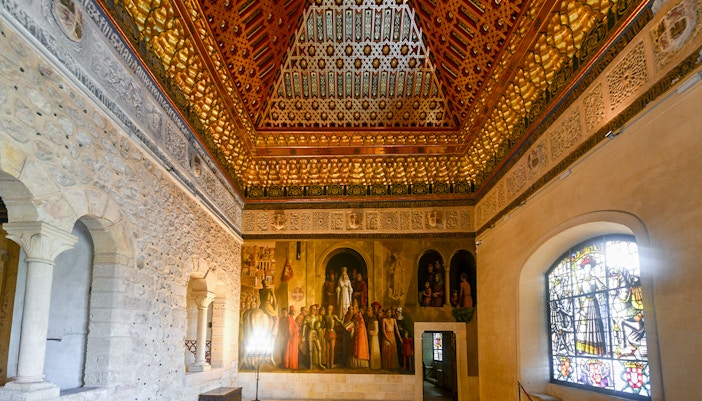
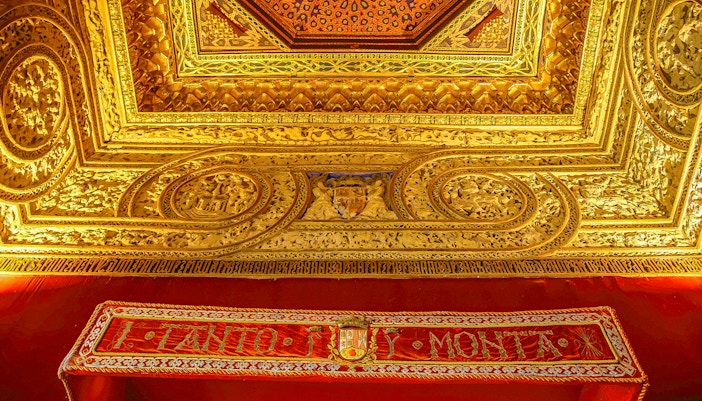
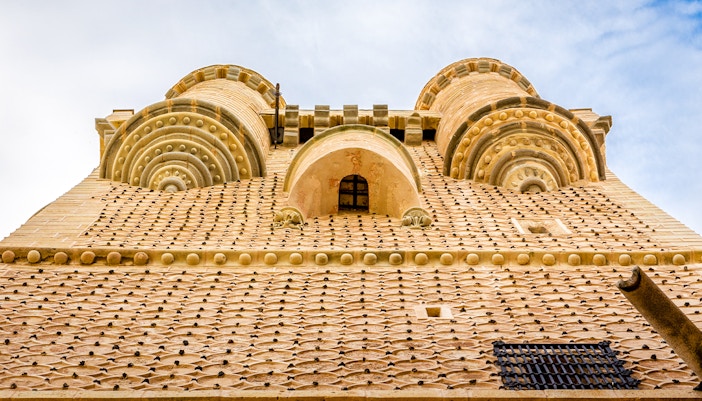
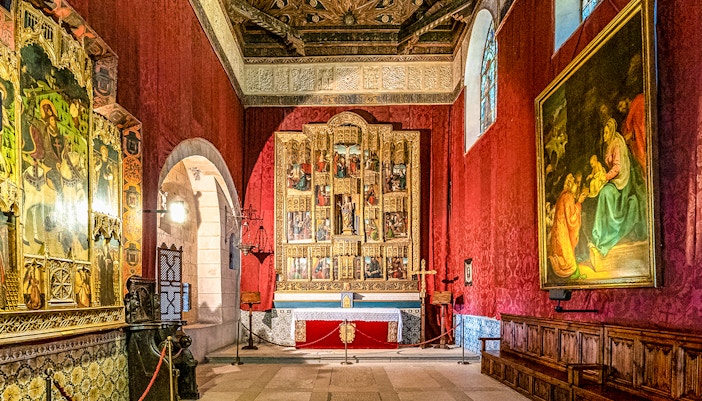

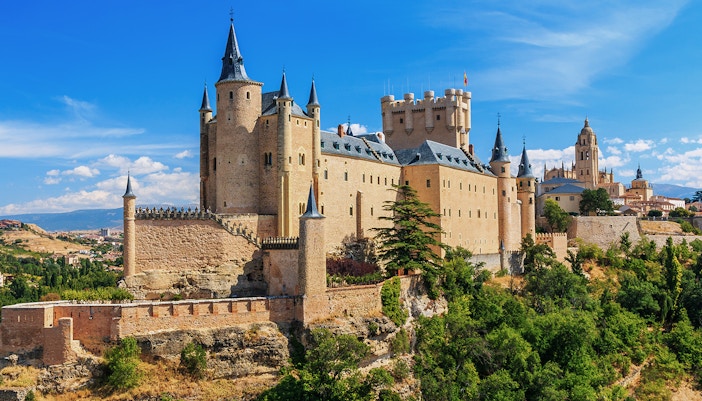
From royal residence to military academy, the Alcázar has worn many hats (or should we say crowns?). It was here Queen Isabella I received Christopher Columbus before his famous voyage that changed the course of history. Centuries later, Spain’s artillery corps used it as their training ground, marking its shift from royal seat to military stronghold.
As you walk its corridors, you sense the enduring spirit of past generations. This historical haven has experienced periods of flourishing art, political significance, and architectural reinvention that continue to shape its character. From its medieval beginnings to its royal prominence, each era contributed layers to its intriguing story. Today, it remains a cultural icon of Castile and León, embodying centuries of Spanish power, politics, and pageantry.
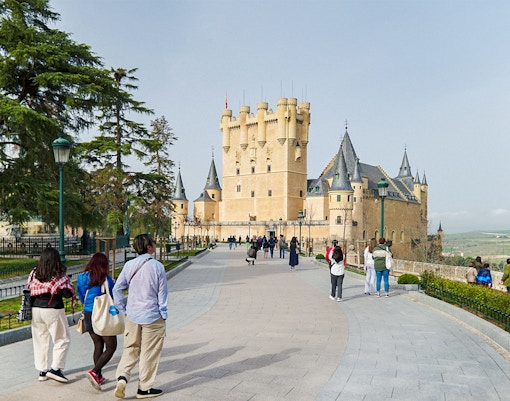
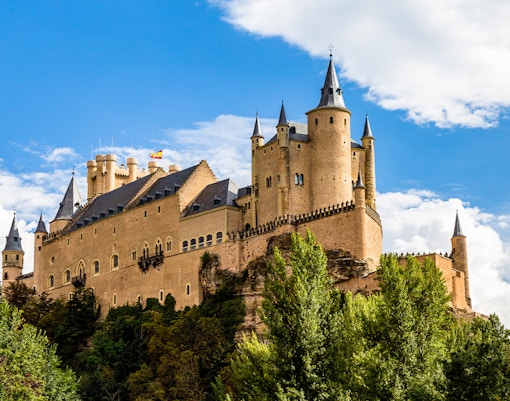
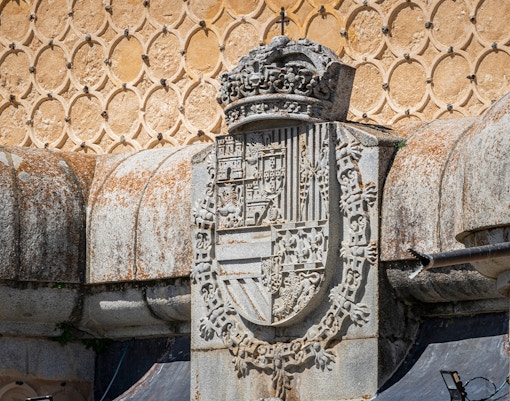
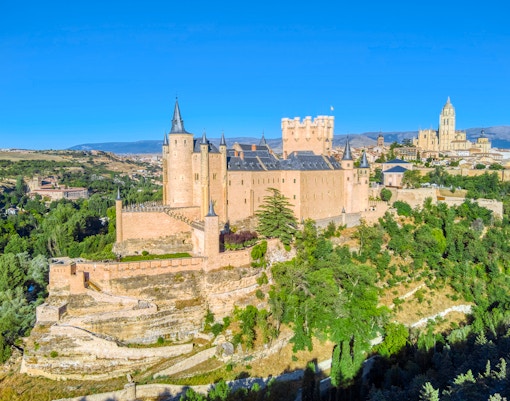
Yes, kids love the turrets and armor displays. Just keep an eye on them in the tower climb.
No strict code, but comfy shoes are a must for the cobblestones and stairs.
No, food and drinks are not allowed inside the halls. There are cafés and restaurants nearby in Segovia’s old town.
Strollers are not allowed inside. It’s best to use a baby carrier if traveling with young children.
There is no parking directly at the castle. Paid parking is available in Segovia’s old town, about a 10-minute walk away.